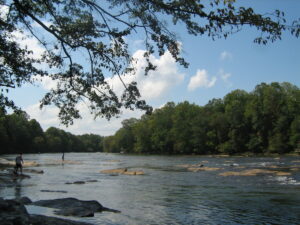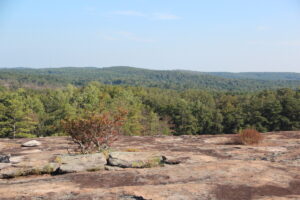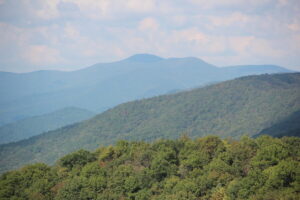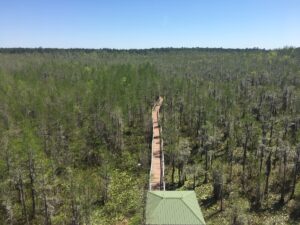By Mike Gonzalez (TheCoffee) – Own work, CC BY-SA 3.0, https://commons.wikimedia.org/w/index.php?curid=2807820
Originating in the Blue Ridge physiographic province, the Chattahoochee River flows through the Piedmont and the Atlanta metropolitan area into the Coastal Plain, where it joins the Flint River to form the Apalachicola River, then flowing into the Gulf of Mexico. The river runs along the Brevard Fault. The stream has numerous impoundments, perhaps the most significant of which is the Buford Dam, north of Atlanta, which creates Lake Lanier. Between Lake Lanier and metro-Atlanta, various patches of natural areas along the Chattahoochee have been preserved in the Chattahoochee River National Recreation Area (CRNRA), administered by the National Parks Service. These areas, along with the river itself, are important for recreation in the area. The river is a major source of drinking water for the City of Atlanta. However, it is also heavily impacted by urbanization and pollution. One significant issue that it faces are the sewer lines running along it and its tributaries, which occasionally spill raw sewage into the water.
Chattahoochee Riverkeeper. (n.d.). Our River.
Georgia River Network. (n.d.). Chattahoochee River.



